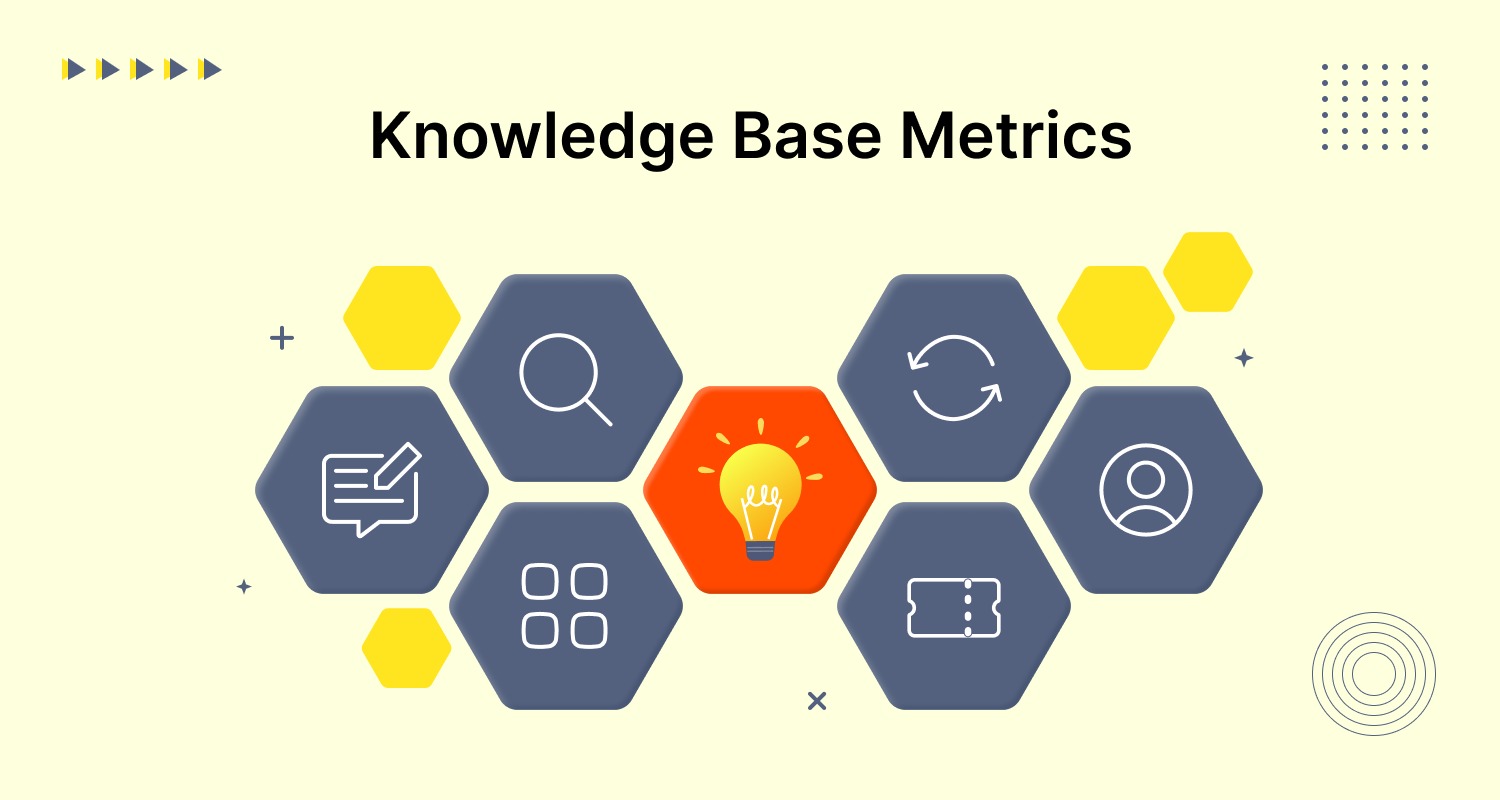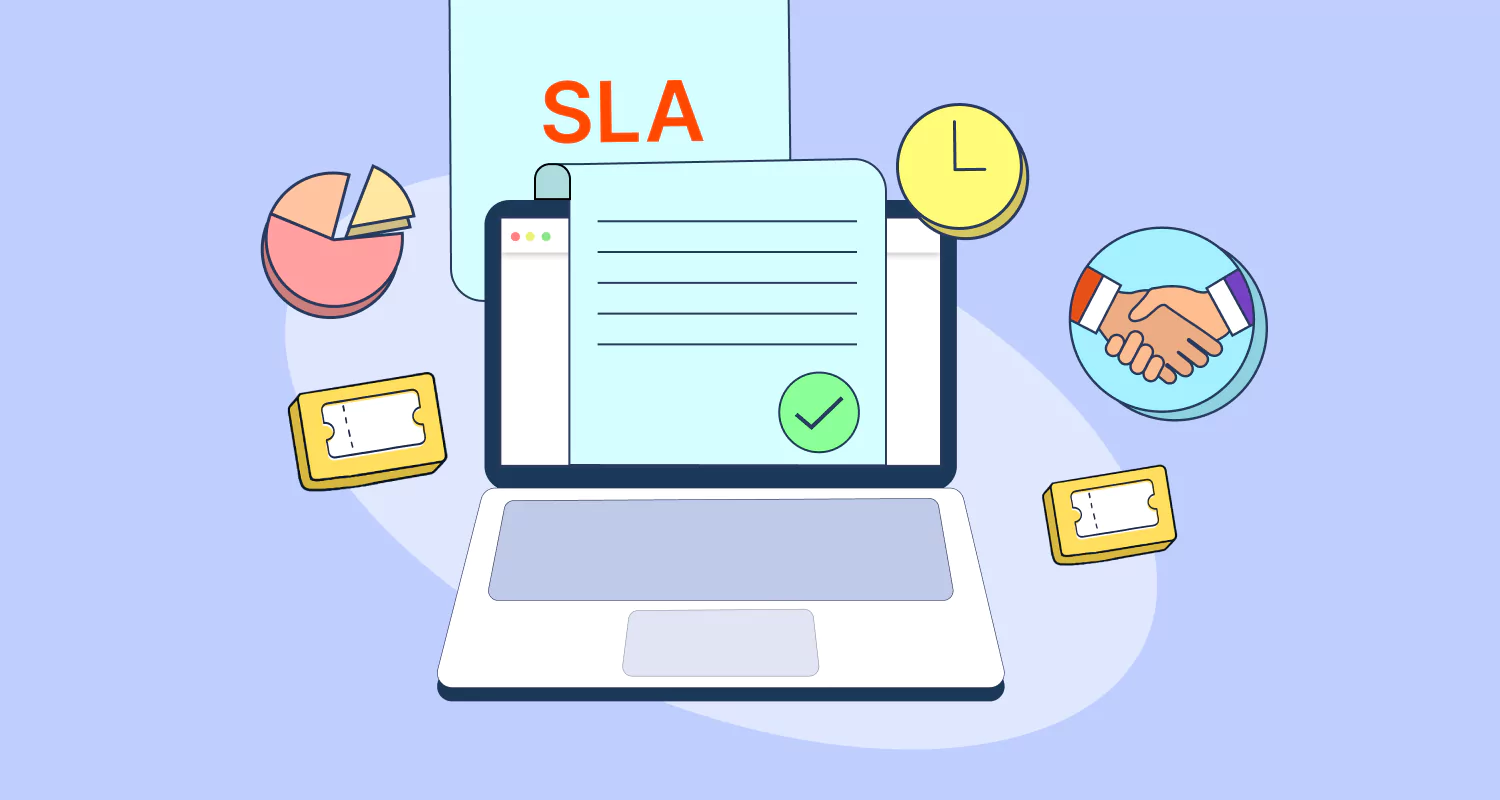The importance of a knowledge base in customer support cannot be overstated. A study by IBM revealed that companies with a strong knowledge base are 3 times more likely to innovate and grow faster than those without.
Effective customer support, therefore, starts with a robust knowledge base. So, it’s crucial for companies to create a well-organized and relevant knowledge base and periodically improve it.
But how can you guarantee that your knowledge base remains relevant and contributes to exceptional outcomes for you and your team?
In this blog, we will acquaint you with the essential knowledge base metrics to monitor to ensure your knowledge base reaches its full potential.
These knowledge base key performance indicators (KPIs) will not only assist you in evaluating the efficacy of your content but also unveil critical insights into user behavior, areas that need enhancement, and chances to boost productivity.
Knowledge base metrics you should be monitoring
Monitoring knowledge base KPIs is essential to ensure your knowledge base’s usefulness and relevance. We recommend tracking the following knowledge management metrics to see how well your knowledge base is fulfilling its intended objectives.
1. Engagement of users with the knowledge base
According to the Harvard Business Review, 81% of all clients attempt to take care of issues themselves before reaching out to live customer support. Monitoring the traffic of your knowledge base is an excellent method to assess the efficiency of your content over time.
It is possible to gather and examine data like the following:
- Total number of unique visits.
- Questions asked.
- Time spent on a page.
- Times an article was shared.
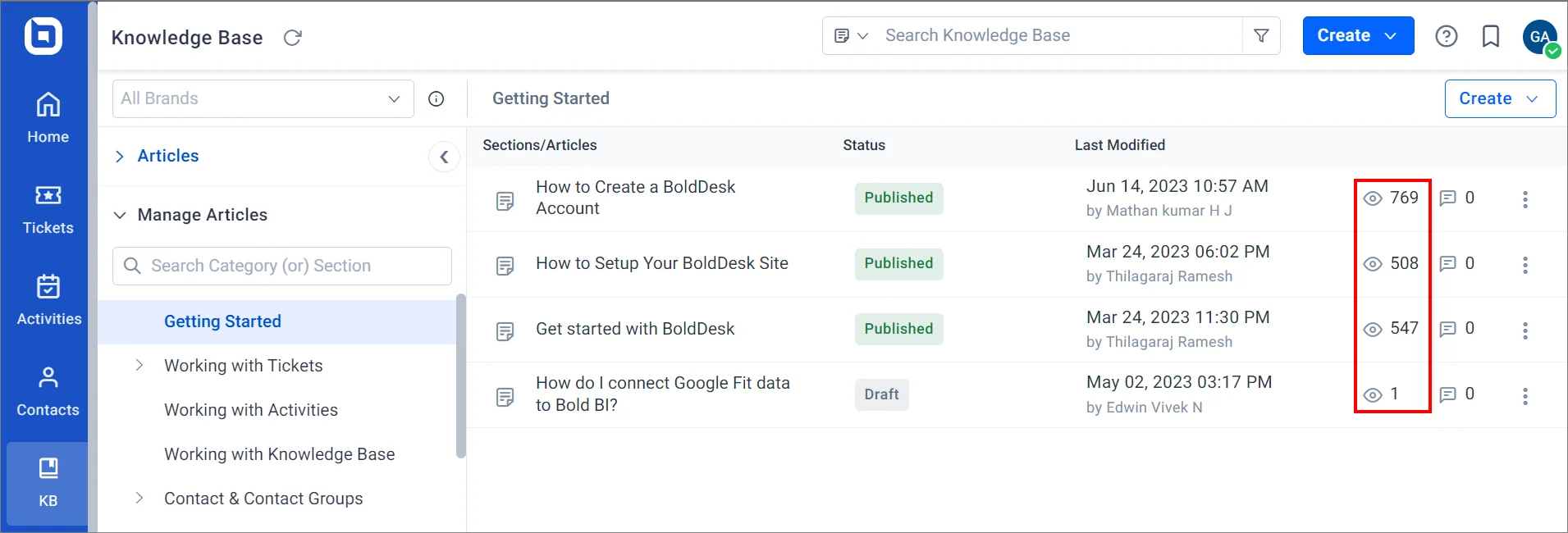
High user engagement indicates that users can easily access the knowledge base. The length of time spent on a page will tell you whether it effectively meets the readers’ requirements.
A few-second skim followed by a bounce means the page didn’t have the necessary information. A longer linger indicates the content is being more thoroughly read, dependent on the length of the article.
2. Most popular reads
Identifying the most-viewed articles provides insight into what your clients typically search for, enabling you to offer optimal support and information.
Being aware of the most popular help topics at any given moment will assist you in making modifications to your product or service to eliminate common problems.
Conversely, articles with minimal interaction may need refinement or updating to better address user needs.
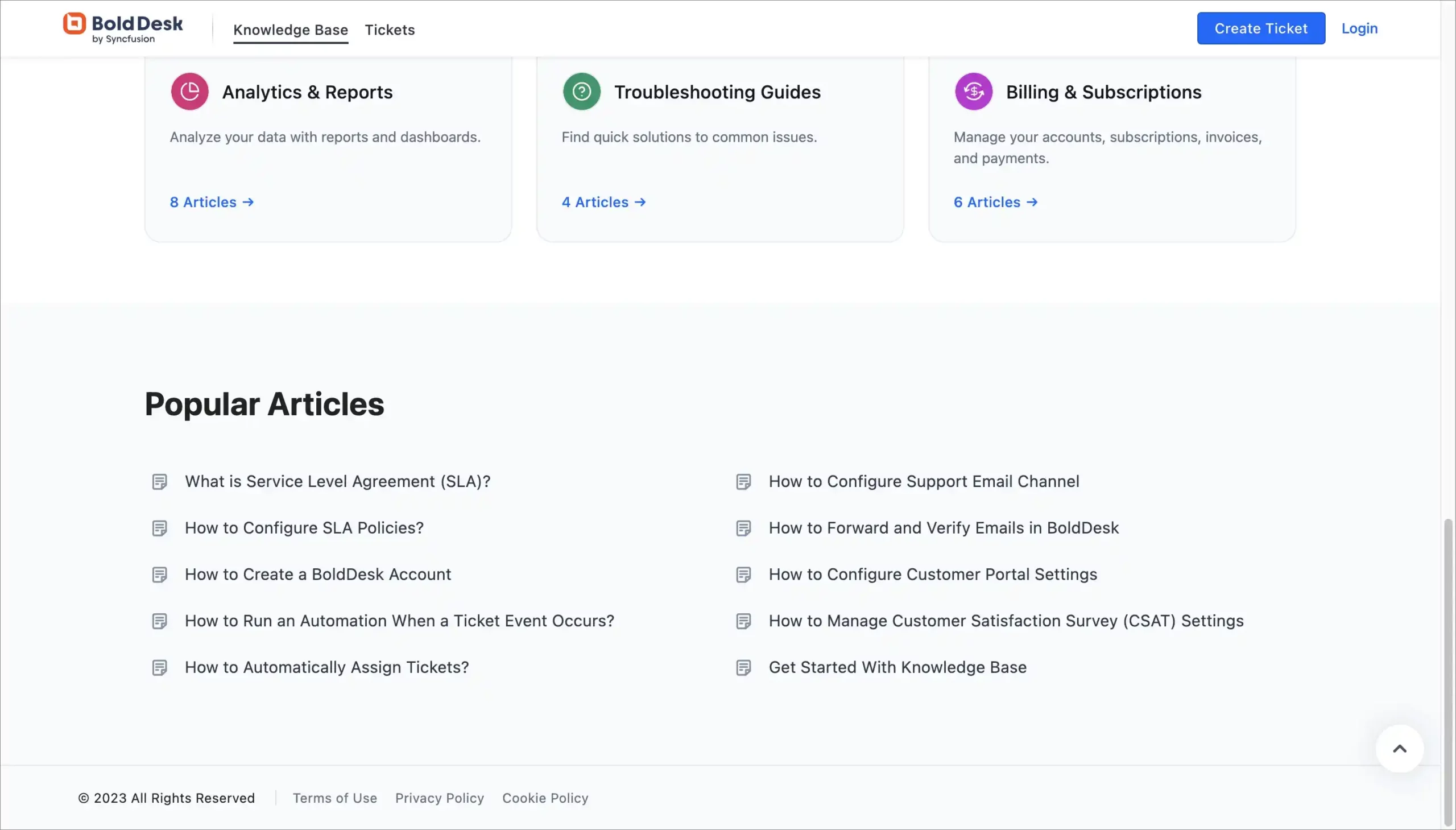
The most popular articles can serve as examples for optimizing other articles as far as length, topic, and complexity go.
3. Knowledge base visits vs number of support tickets
Examining the relationship between the traffic to your knowledge base and the number of customer support requests your team receives can help you comprehend the influence your knowledge base has on customers reaching out to your team.
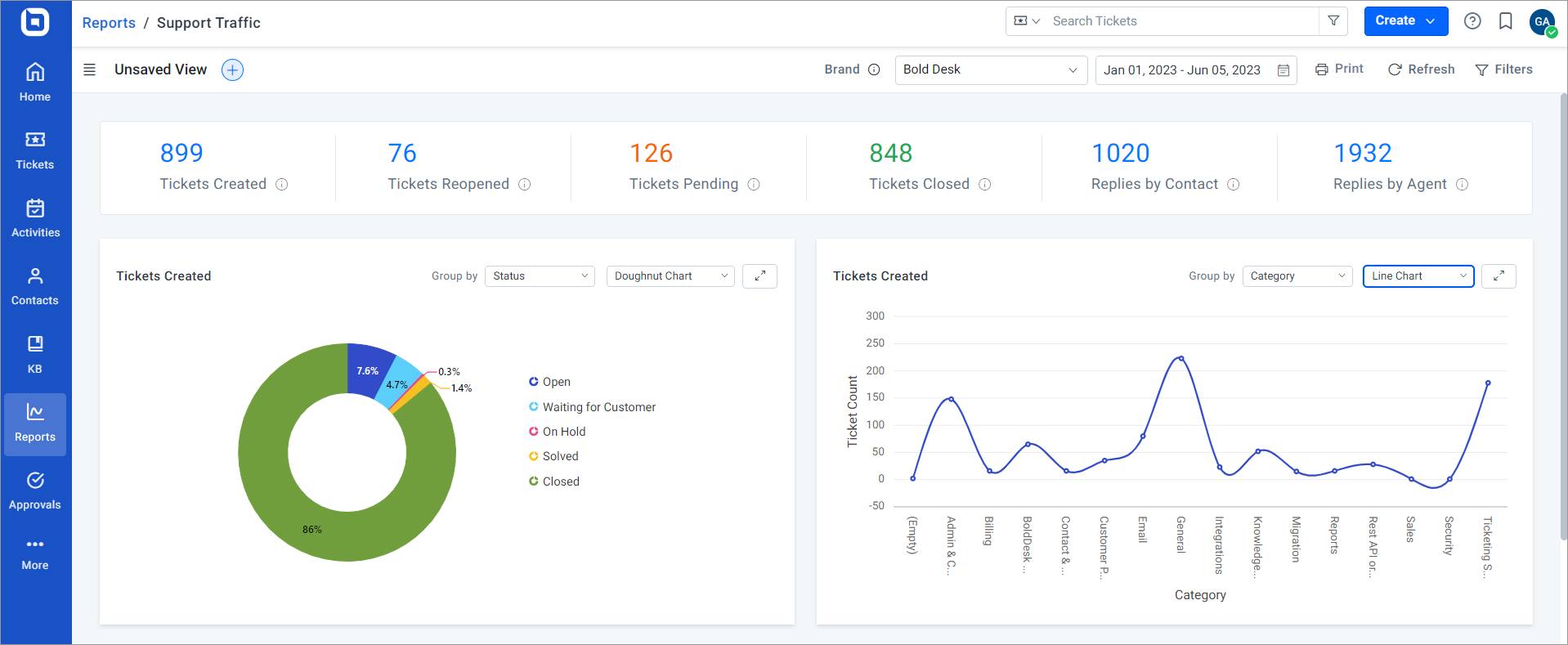
Expanding your client base without causing a corresponding rise in support requests is the dream, right?
Well, a knowledge base can be the magic tool—direct customers toward its articles, and they’ll soon learn to seek answers before reaching out for help. However, it should never be the only form of help given.
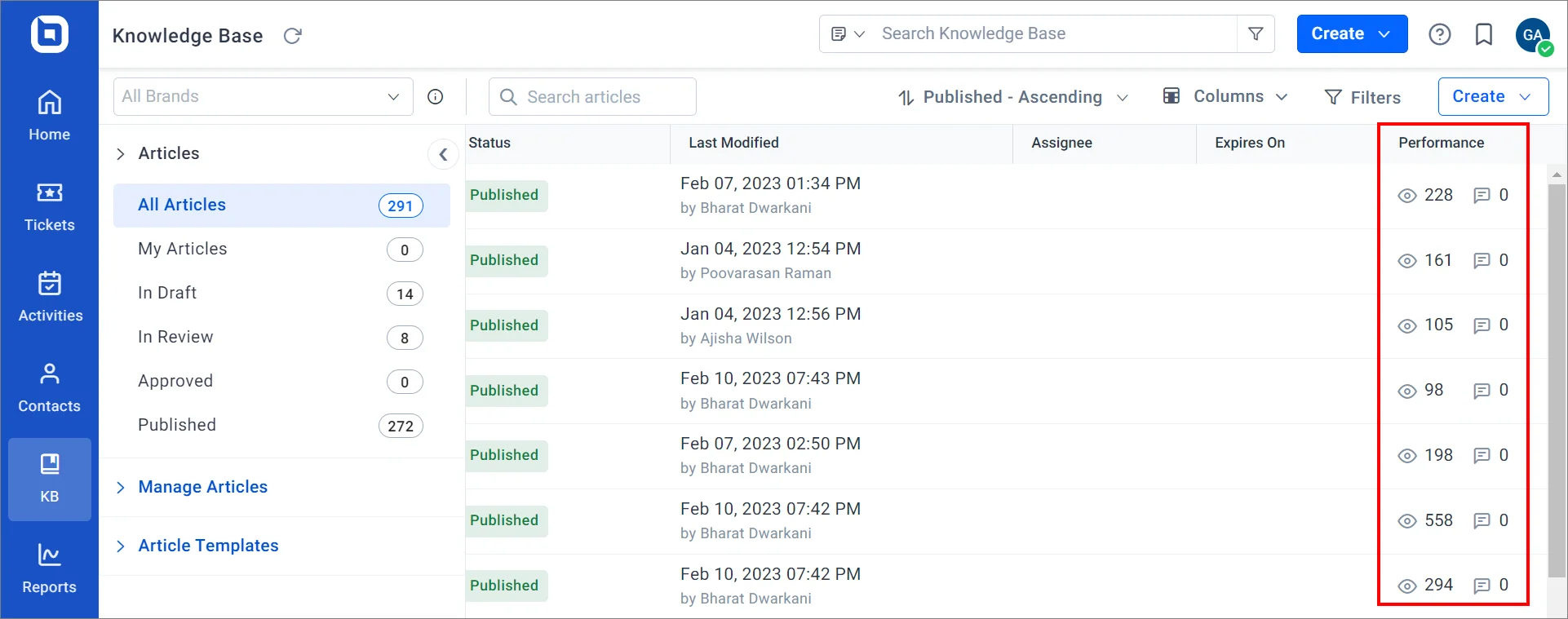
Ideally, an efficient knowledge base should cause a decrease in the number of support tickets over time. It may only fluctuate in response to specific events, like when you launch a new product.
4. Search box activity
How often are users performing searches on the platform? What are some of the common terms they search for? Search analytics can be a valuable knowledge base metric for your support team.
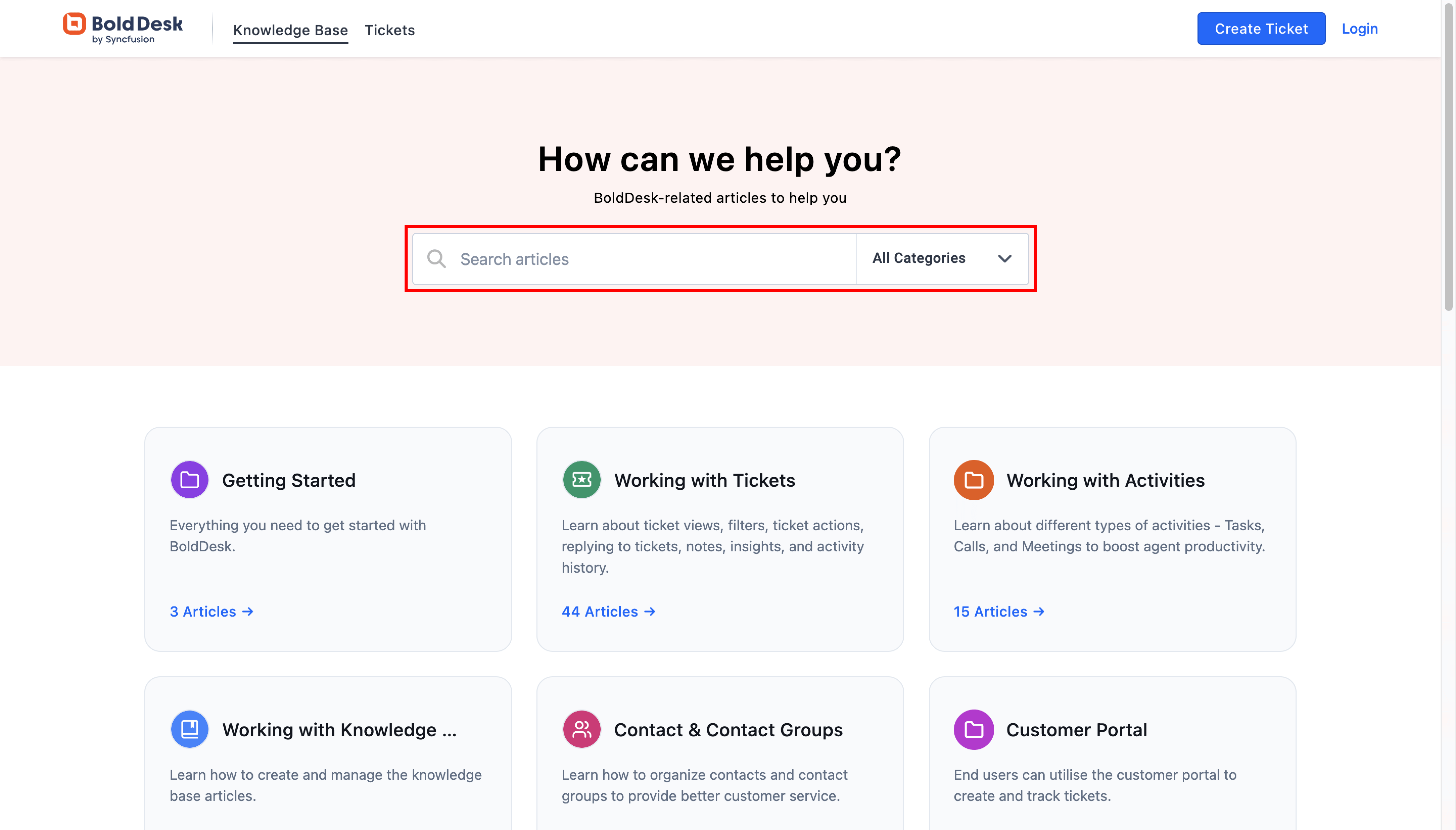
You can easily determine Frequently Asked Questions (FAQs) and develop improved articles, tutorials, and infographics to address these concerns.
User search queries that yield no results can reveal deficiencies in your knowledge base. This information can be used to guide the improvement of your knowledge base in future updates.
You can create new articles, modify document titles, and adjust keywords to make sure they are included in results whenever users search for relevant information.
5. User feedback surveys
As users are the ones who can determine if the knowledge base meets their needs, their feedback plays a crucial role in assessing the efficiency of your knowledge base.
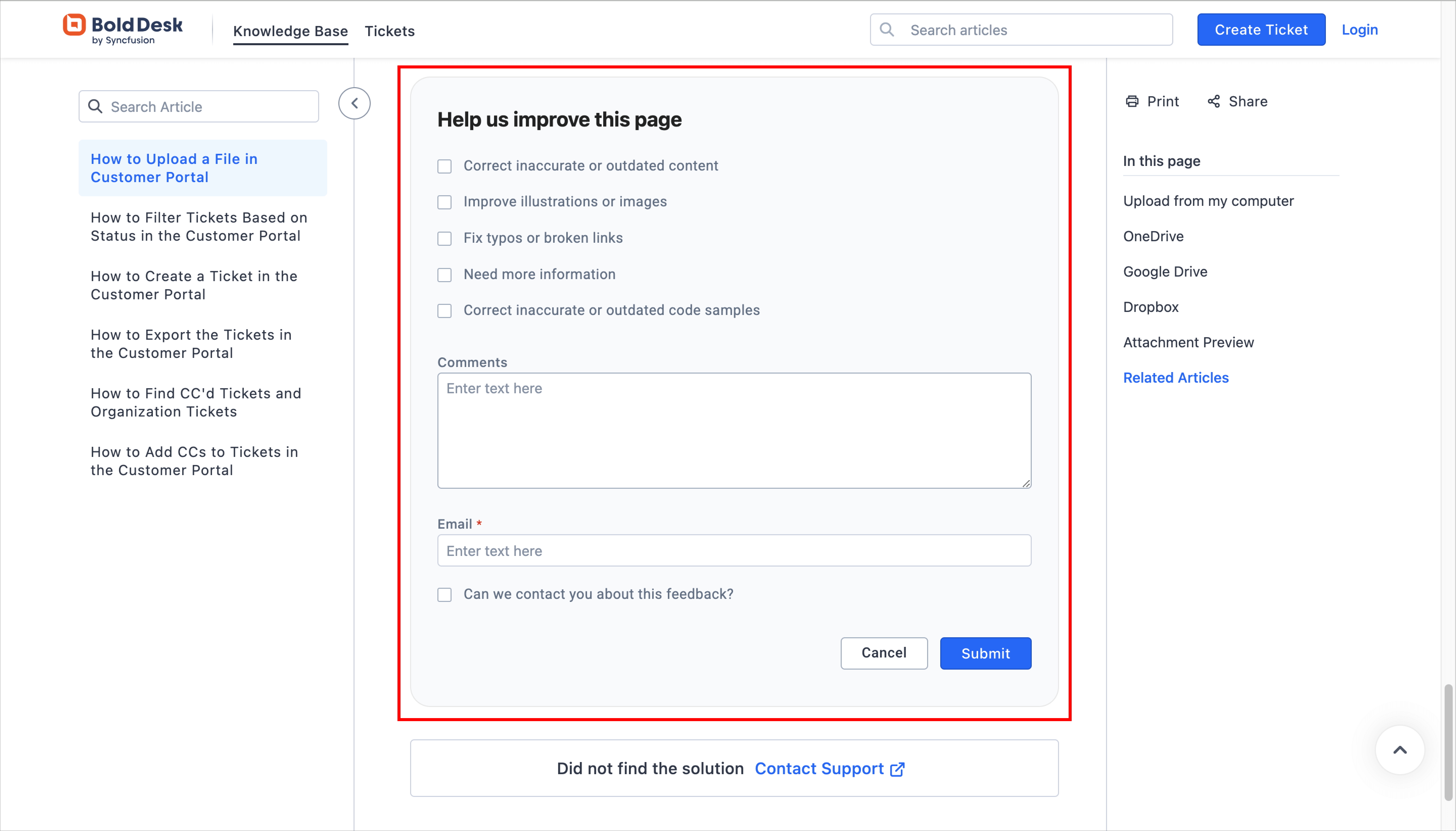
While negative feedback can be discouraging, it can also serve as a useful guide for enhancing and fine-tuning your content. Embracing constructive criticism enables you to identify areas requiring change, ultimately improving the quality of your knowledge base.
This is one of the important knowledge base KPIs in which positive feedback indicates that your knowledge base was a worthy investment and that it aligns well with business needs. Articles with the highest positive ratings can serve as a model for enhancing those with negative feedback.
6. Last update dates
It is essential to frequently update your knowledge base to keep up with ongoing product, service, and process changes. Depending on your business, information may need frequent or just occasional updates, so you’ll need to decide at what age an article needs to be checked.
By keeping track of the time since each article in the knowledge base was updated, you can guarantee that your information stays accurate and relevant.
This metric allows you to sustain a dependable resource that not only caters to user needs but also cultivates their trust in your capacity to deliver outstanding service.
7. Knowledge base articles usage in support replies
According to a report by Forrester, employees spend about 1.8 hours every day—9.3 hours per week, on average—searching and gathering information. A well-crafted knowledge base can reduce this time by providing instant access to information.
How often knowledge base articles are used in customer support replies is a good metric for measuring how efficiently your knowledge base is complementing your customer support efforts.
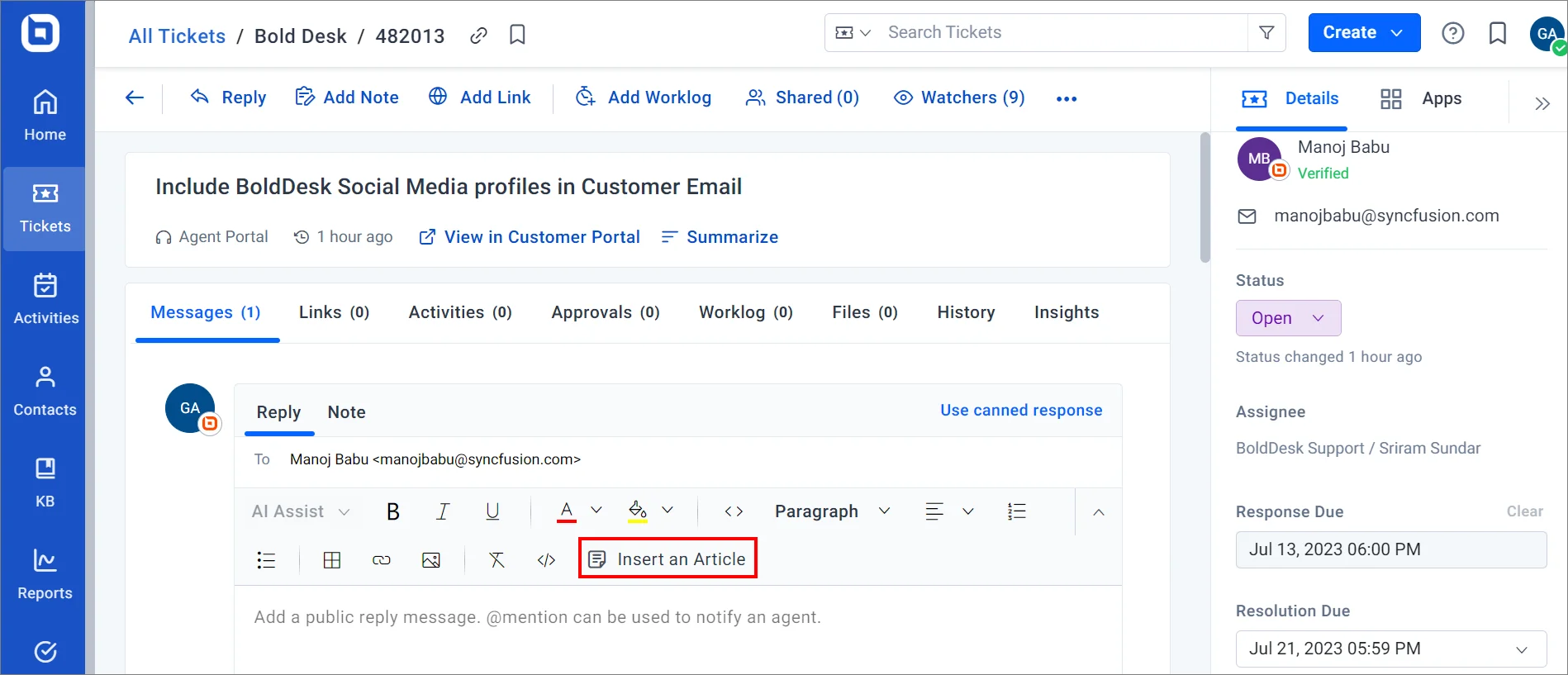
This metric highlights the relevance and clarity of the information available in the knowledge base, showing whether it is up-to-date, accurate, and easily accessible by support agents.
A high level of knowledge base utilization in support responses suggests that agents regularly depend on and possess adequate trust in it.
Over to you
We hope that by utilizing the knowledge base KPIs we have discussed, you will be better equipped to make data-driven decisions and refine your knowledge base management strategy.
Monitor and fine-tune your knowledge base articles to guarantee a smooth customer experience and boost overall support effectiveness.
Try out BoldDesk, the best knowledge base software with inbuilt analytics. Contact our support team to schedule a 30-minute live demo to experience the best self-service tool for your support team and customers.
Begin a 15-day free trial to discover how BoldDesk’s features can be fashioned to meet your unique business needs.
Related articles
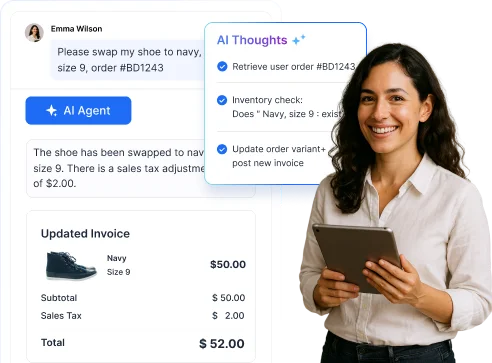


















 Email Ticketing System
Email Ticketing System Shared Inbox Software
Shared Inbox Software Multi Brand Help Desk
Multi Brand Help Desk Internal Help Desk Software
Internal Help Desk Software Trouble Ticketing Software
Trouble Ticketing Software Mobile Help Desk
Mobile Help Desk 









